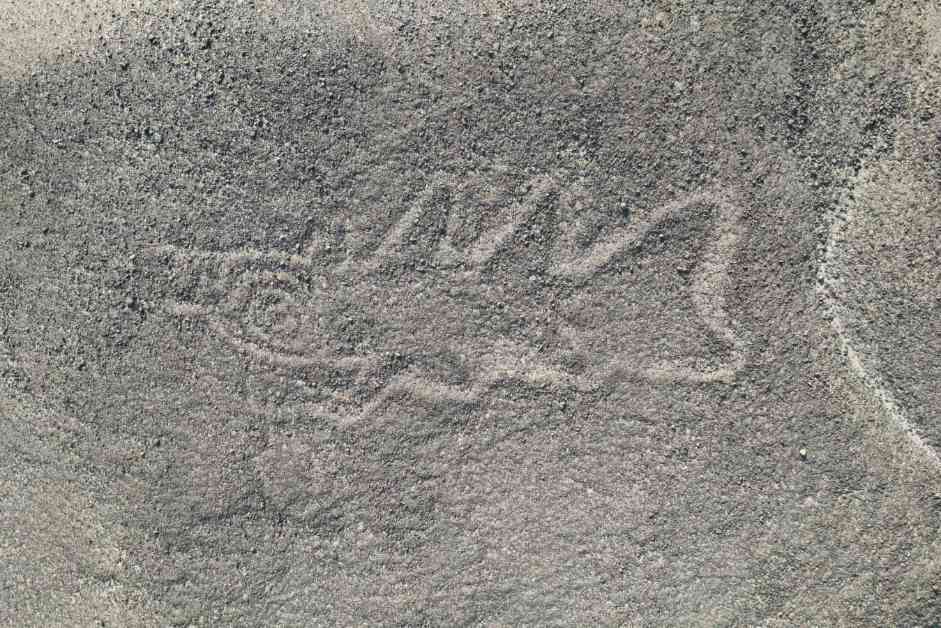Archaeologists in Peru have made a groundbreaking discovery with the help of artificial intelligence, unearthing hundreds of ancient drawings in the Peruvian desert. These drawings, known as geoglyphs, depict a variety of figures including llamas, decapitated human heads, and killer whales armed with knives. The geoglyphs are believed to have been created by the Nazca culture over 2000 years ago and are smaller and older than the famous Nazca lines found in the same region.
Using AI technology, researchers were able to identify and map out the geoglyphs in aerial photos covering a vast area of the Nazca Pampa and its surroundings. The AI model significantly expedited the screening process, reducing the time needed to identify potential geoglyphs by eliminating low-probability areas from consideration. This led to the discovery of a total of 303 figurative geoglyphs during field surveys conducted in 2022 and 2023.
The smaller geoglyphs found are believed to have been used in ritual activities by individuals or small groups, while the larger line geoglyphs were likely part of community-wide rituals. The use of AI in archaeological research has opened up new possibilities for discovering more geoglyphs in the region beyond the UNESCO World Heritage Site of the Nazca lines. This is crucial as many of these ancient drawings are at risk of being erased due to agricultural expansion, urban development, and other factors.
While the AI technology has proven to be a valuable tool in identifying visible geoglyphs, there is still a need for manual inspection and further field surveys to uncover more hidden and difficult-to-detect geoglyphs. Researchers are hopeful that the remaining AI-identified candidates will provide more insights into the ancient Nazca culture and their practices. The discovery of these geoglyphs sheds light on the rich history of the region and highlights the importance of preserving these archaeological treasures for future generations to study and appreciate.
